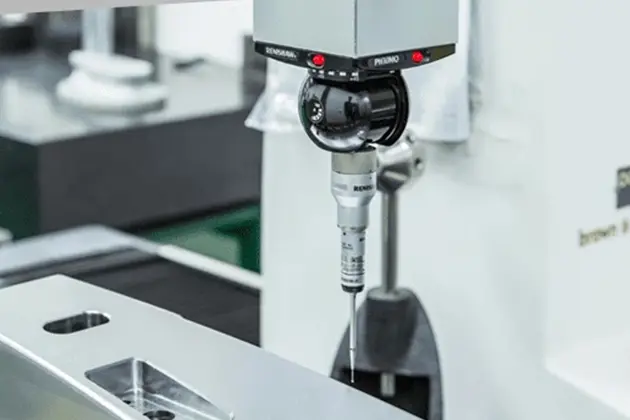Plastic injection molding is a highly versatile and widely used manufacturing process for producing plastic components. From small intricate parts to large, complex structures, plastic injection molding companies offers remarkable efficiency, precision, and cost-effectiveness. In this comprehensive guide, we will take you through the entire plastic injection mold design process, from initial design considerations to the production of the final finished product. Join us as we unveil the intricacies of this remarkable manufacturing technique.
Understanding Plastic Injection Molding
Plastic injection molding is a process that involves injecting molten plastic material into a specially designed mold cavity. The molten plastic is then cooled and solidified, taking on the shape of the mold cavity. Once solidified, the mold is opened, and the final plastic part is ejected. This process allows for the rapid and efficient production of plastic components with consistent quality and precise details.
The Design Phase
The success of the mold manufacturing project begins with careful design considerations. During the design phase, several factors come into play, including:
- Part Design: Creating a well-designed part involves considering factors such as functionality, aesthetics, structural integrity, and ease of manufacturing. Designers utilize computer-aided design (CAD) software to develop detailed 3D models of the part, taking into account features such as wall thickness, draft angles, and parting lines.
- Mold Design: Concurrently with part design, mold design takes place. Mold designers create molds that consist of two halves, the core, and the cavity, which define the shape and features of the final part. Factors such as gate placement, ejection mechanisms, and cooling channels are carefully considered to ensure optimal mold performance.
Tooling and Mold Fabrication
Once the part and mold designs are finalized, the next step is tooling and mold fabrication. This involves the creation of the actual mold that will be used in the injection molding process. The steps involved in tooling and mold fabrication include:
- Mold Base Preparation: The mold base, typically made of steel, is prepared by machining it to the required specifications. This includes creating slots and holes for the various components of the mold, such as the core, cavity, and ejector pins.
- Core and Cavity Machining: The core and cavity, which form the internal and external surfaces of the part, are machined using precision CNC (Computer Numerical Control) machining processes. Highly skilled machinists carefully craft the core and cavity to match the exact specifications of the part design.
- Additional Mold Components: Various additional components, such as ejector pins, cooling channels, and gating systems, are added to the mold to facilitate the injection molding process and ensure efficient part production.
The Injection Molding Process
Once the mold is fabricated, it is ready for the injection molding process. The steps involved in plastic injection molding include:
- Mold Preparation: The mold is prepared for the injection molding process by cleaning and applying a mold release agent to ensure smooth ejection of the finished part.
- Plastic Material Preparation: The plastic material, typically in the form of small pellets or granules, is carefully selected based on factors such as material properties, part requirements, and cost. The plastic material is then heated to a molten state in an injection molding machine.
- Injection: The molten plastic material is injected into the mold cavity under high pressure. This is achieved by the injection molding machine’s screw mechanism, which pushes the molten plastic through the nozzle and into the mold.
- Cooling and Solidification: Once the mold cavity is filled with molten plastic, the cooling process begins. The mold’s cooling channels help dissipate the heat, causing the plastic to solidify and take on the shape of the mold cavity.
- Mold Opening and Ejection: After the plastic has solidified, the mold is opened, and the finished part is ejected using ejector pins or plates. The part is then separated from the runners and sprues, which are recycled for future use.
Finishing and Quality Control
Once the plastic parts are ejected from the mold, they may undergo additional finishing processes to achieve the desired surface finish, texture, or coloring. These processes may include trimming excess material, adding secondary features, such as threading or engraving, and applying any necessary coatings or treatments.
Quality control is an integral part of the plastic injection molding process. Throughout the entire process, quality checks and inspections are conducted to ensure that the parts meet the specified tolerances, dimensions, and surface finish requirements. Advanced measurement techniques, such as coordinate measuring machines (CMMs), are used to verify the part’s accuracy and adherence to the design specifications.
Advantages and Applications of Plastic Injection Molding
Plastic injection molding offers several advantages that make it a preferred manufacturing process for a wide range of industries. These advantages include:
- Cost-effectiveness: Injection molding allows for high-volume production, reducing per-unit costs significantly.
- Design Flexibility: The process enables the production of complex shapes, intricate details, and varied part sizes.
- Material Versatility: Plastic injection molding supports a wide range of plastic materials, each with its unique properties and characteristics.
- Rapid Production: The cycle time for plastic injection molding is relatively short, enabling rapid production of large quantities of parts.
Plastic injection molding finds applications in numerous industries, including automotive, medical, consumer goods, electronics, and more. It is utilized to produce a vast array of products, ranging from small precision components to large structural parts.
Conclusion
The plastic injection molding process is a highly efficient and versatile manufacturing technique that enables the production of high-quality plastic parts with remarkable precision and speed. From design to the finished product, each step in the process is critical to ensuring successful part production. By understanding the intricacies of plastic injection molding, you can harness its advantages to bring your innovative designs to life, meet market demands, and drive success in your industry.










